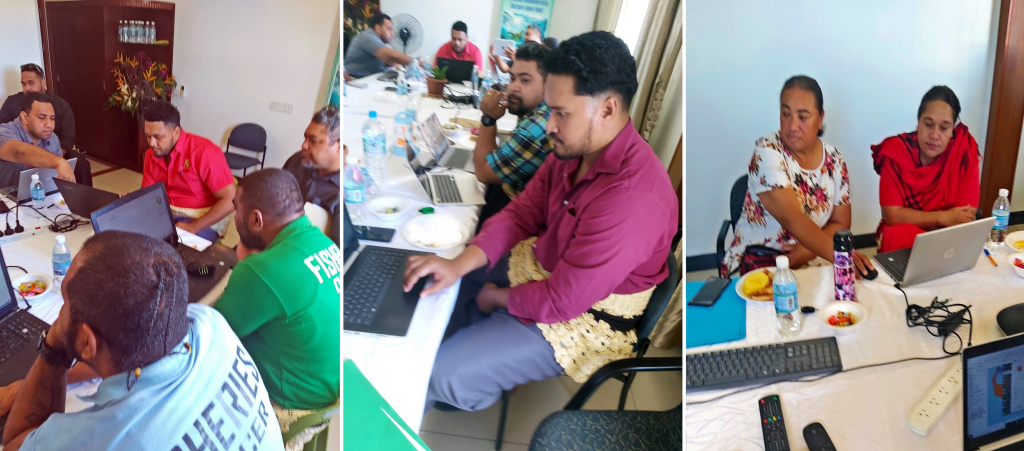
Government stakeholders in Tonga have been equipped with hands-on, practical knowledge of finding relevant up-to-date data; information resources and technical guidance to assist protected and conserved area management.
They are also able to use spatial data and GIS software to produce and export basic protected area maps with standard features.
It follows a virtual training on the tools and features of the Pacific Islands Protected Area Portal (PIPAP) and Geographic Information Systems (GIS), co-organised by the Secretariat of the Pacific Regional Environment Programme (SPREP) and the Tonga Ministry of Meteorology, Energy, Information, Disaster Management, Environment, Climate Change and Communications (MEIDECC), through its Department of Environment.
In addition to the Environment staff, the training engaged staff of the Department of Information (MEIDECC), the Tonga Ministry of Fisheries, the Ministry of Tourism, and the Ministry of Lands and Natural Resources.

“The skills acquired through this training will enable our Ministry and stakeholders to share the latest information and guidance to assist planning and decision-making processes for our protected and conserved areas through the use of the Pacific Islands Protected Area Portal, it has also provided us with the necessary technical skills to produce protected area maps with ease,” said the Director for Environment, MEIDECC, Ms Lupe Matoto.
“The training has been a valuable experience, especially for those who were able to participate over the two days. My sincere appreciation to our stakeholders who participated from outside the Ministry of MEIDECC, this training addresses a key priority for Tonga, and we are very grateful to SPREP and the BIOPAMA Programme for this support and assistance.”
On the first day of the training, a real-time demonstration of the tools and features of the PIPAP was complemented by hands-on exercises. Participants learnt how to view, familiarise and conduct simple interpretation of their national protected area data, carry out basic and advanced searches for information resources using categories and tags, create descriptive site-based submissions and drawing in basic site boundaries, and locating/accessing technical guidance and tools on different aspects of protected and conserved area management available through the portal.
The GIS component (Day two) covered the basic concepts of GIS and provided participants with practical skills in the use of free open-source software (QGIS), spatial data capture from OpenStreetMap (OSM) and export to QGIS to produce basic site maps with standard layout - title, scale, descriptive labels and clear boundaries. Furthermore, participant also learnt how to export the maps to different formats.
“A key aspect of this training has been to demonstrate to participants the relevance of, and value that the PIPAP portal and GIS skills can add to different aspects of their daily work and I am pleased that we have been able to address this priority capacity need for Tonga, collaborating closely with our colleagues at MEIDECC,” said Mr Vainuupo Jungblut, Protected Areas Officer, SPREP.
“Follow-up technical assistance will be provided in the coming months, as needed.”
.jpg)
The Virtual Training on the Pacific Islands Protected Area Portal (PIPAP) and Geographic Information Systems to support protected area planning and decision making in the Kingdom of Tonga, held on 23-24 November was funded through the BIOPAMA Programme, an initiative of the Organisation of African, Caribbean and Pacific (OACPS) Group of States financed by the European Union 11th European Development Fund.
In the Pacific, the project is implemented by IUCN Oceania in partnership with SPREP and the European Commission Joint Research Centre. This partnership has assisted the SPREP Regional Programme of Support for Protected Areas (SPREP-PA) to become a decision-making support hub, including delivering capacity building activities and training in the use of BIOPAMA support tools and services. It has also seen significant enhancements of the Pacific Islands Protected Area Portal, the region’s one-stop resource for protected area information.
To learn more about the BIOPAMA regional decision-making support hub, please contact Mr. Vainuupo Jungblut, Protected Areas Officer on email: [email protected]